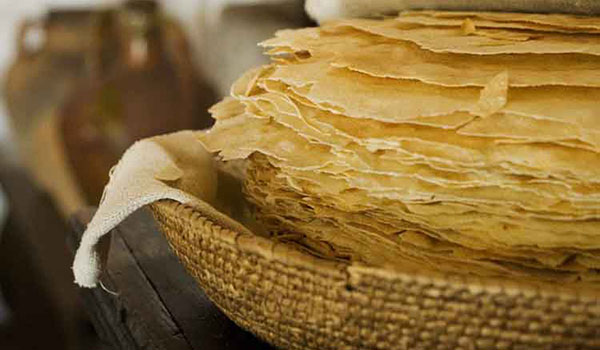
It is in the heart of this island that we can really appreciate the majestic appeal of Texile di Aritzo, a mountain that dominates the thirteen villages of the mountain community of Barbagia Mandrolisai. Centuries-old traditions, deep roots of a world far away from the metropolis. In the old historic centre of Aritzo, the remains of the “domos de nie” (snow houses) are still visible. In fact, the Artizo people really used to prepare sa carapigna, the typical sorbet made with the juice of citrus fruits with this snow. This recipe is one of many ancient traditions that risked disappearance, but that can still be found today at fairs and festivals. On the last Sunday of October, an important event takes place at Aritzo: the festival of the chestnut. This day is dedicated to this fruit which, together with hazelnuts, walnuts and almonds, is very common in the Barbagia region. At the start of the summer, there is a cherry festival in nearby Belvi. This is an occasion on which you can taste the famous caschettes – sweets, with a characteristic scallop-edged spiral form, made with a very thin, flaky pastry, filled with a mixture of honey and hazelnuts. In Desulo, we can find mushrooms (specifically: edible boletus), walnuts and chestnuts, as well as the typical, and very tasty, dried sausages (long and soft), and the specific hams of this region. Tonara is considered the homeland of torrone (nougat). In fact, the people of Tonara are experts in the production of this type of sweet, which is obtained by working honey, dried fruit (in particular almonds, but also walnuts and hazelnuts) and egg-whites, all in together. Torrone from Sardinia is easily distinguished from that made in other parts of Italy, as the slow and tiring preparation that it goes through, makes it very soft. The rich vegetation in Sardinia favours the diffusion of a large variety of honeys, such as chestnut honey, citrus fruit, asphodel, thistle and millefiori (thousand flower honey). The bitter corbezzolo (strawberry tree) honey is well worth mentioning, with its unmistakeable, intense and balsamic flavour, that makes it particularly suitable for drizzling over melted pecorino (sheep’s milk cheese) and seadas (circular sheets of pasta, filled with fresh pecorino and lemon, fried in olive oil). In Meana, apart from tasting the typical cheeses that have maintained the flavour and traditional methods of Barbagia, we can also appreciate the use that is made of these cheeses in cooking, for the preparation of su succu, for example. This is an Easter dish and a product of a delicate egg pasta that is amalgamated with slightly acidulous fresh pecorino, Sardinian pecorino, lard and pepper, and then left to cook in the oven, until crispy and golden on top. Also in Meana, we can taste pane’e saba. This is a typical dessert that is prepared from a mixture of durum wheat flour, walnuts, hazelnuts, raisins, candied orange, aniseed, spices, caramelised sugar, and cooked wine must. The final product is quite extraordinary, and takes the form of a round loaf, is warm brown in colour, and is usually garnished with almonds and bay leaves. The culinary tradition of Barbagia is based on the fantastic and extremely tasty roast meats. The flavours of the (not yet weaned) lamb, kid goat and piglet, are due to the wild grazing of these animals. This, together with the slow cooking over a fire and the use of aromatic wood, gives the roasted meat a unique and unmistakeable flavour, as it does also the game of this area (wild boar, hare and partridge). As for the wine, we should stress that this land is particularly suitable for the cultivation of vines, especially on the medium to high hills, where the traditional cultivations of muristellu and cannonau have found their ideal habitat, creating a great richness of aromas. From these grapes, red wines of complex structure, and intense aromas that remind you of the undergrowth, the berries and the small red fruits, are obtained. They are dry, warm, and sapid wines, that are smoothly elegant. We should also state that one of Sardinia’s most structured rosé wines is obtained from these same vineyards, made exclusively from red grapes. It is not by chance, that these wines are produced in the Mandrolisai wine cellars, that are based in Sorgono, (considered to be the capital city of the Mandrolisai), and that, in 1981, these wines were officially recognised as ‘Mandrolisai DOC’ (of controlled origin), recognising an area of great oenological worth. The flavours and traditions of this magic land are part of the teaching programme of the school.


